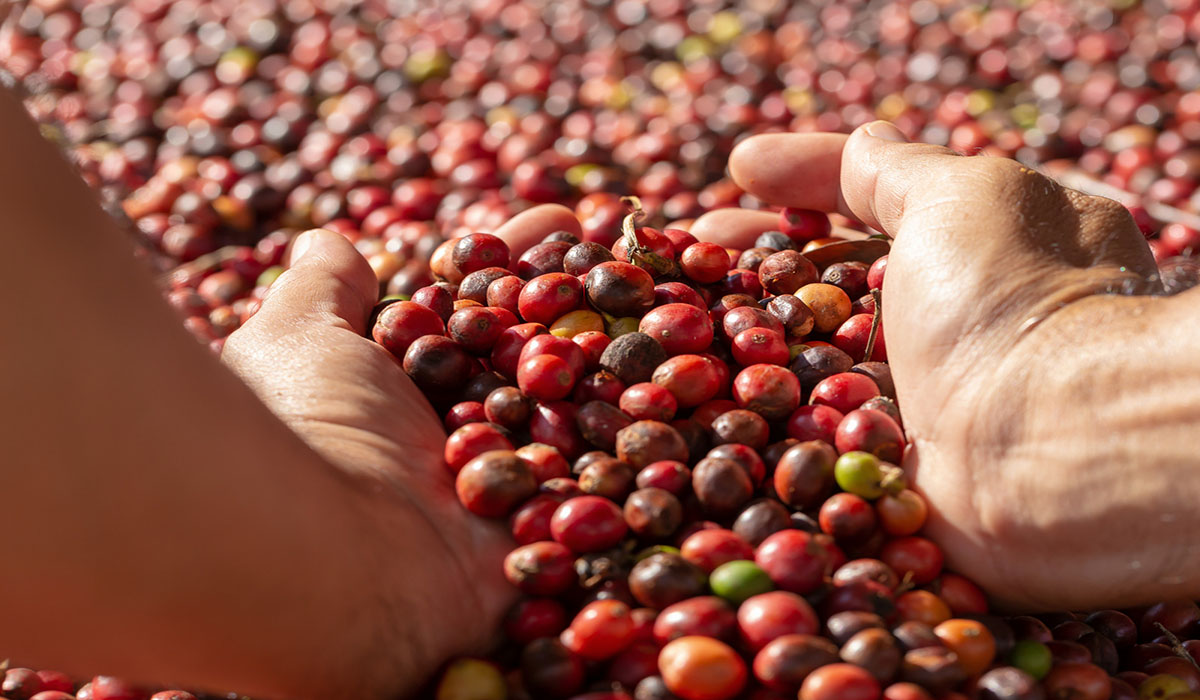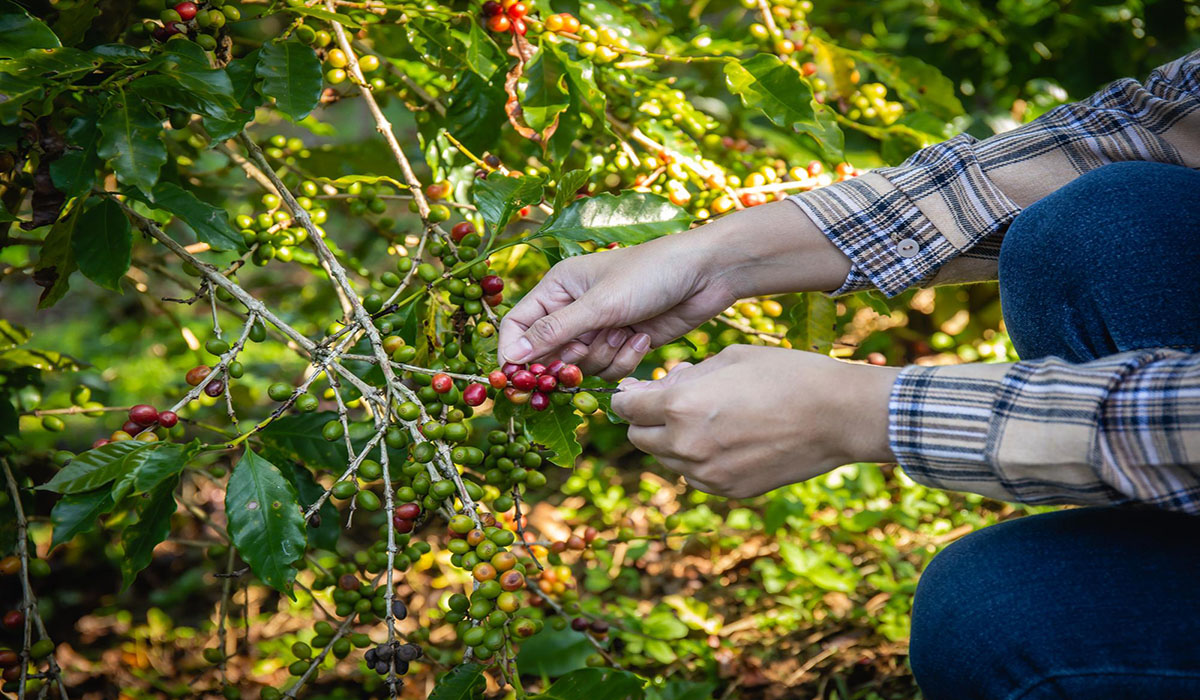Roadmap for the Development of the Coffee Industry in Iran: From Cultivation to Harvest

Coffee, this magical and popular beverage, has found a special place in the consumption basket of Iranians. Drinking a cup of delicious coffee, whether in stylish and modern cafés or in the privacy of one’s home, has become an inseparable part of many of our daily lives.
But have you ever wondered about the processes behind this pleasant aroma and flavor? Do you know what lifecycle the coffee industry in Iran has gone through and what outlook lies ahead? In this article, we aim to examine the roadmap for the development of the coffee industry in Iran, from cultivation to harvest. We will take a journey from the green coffee beans in the southern gardens of the country to the richly colored and aromatic cups in the city cafés.
Along the way, we will become familiar with the challenges and opportunities facing this emerging industry and propose solutions for the development of the coffee industry. So join us as we unveil the secrets behind the growth of coffee in Iran.
Potential for Coffee Cultivation in Iran
You might find it interesting that Iran, despite its diverse climatic conditions, is one of the few countries with high potential for coffee cultivation. Currently, regions in the south of the country, such as Dashti and Tangestan in Bushehr Province, are engaged on a limited scale in coffee tree planting and represent the initial experience of coffee cultivation in Iran’s south.
Experts believe that with comprehensive studies and targeted investment, the cultivation area can be expanded in these regions and even in some other parts of the country, contributing to the significant growth of the coffee industry in Iran. However, coffee cultivation requires specific climatic and soil conditions.
Coffee trees mostly thrive at altitudes between 600 and 2000 meters, with an average temperature of 18 to 22 degrees Celsius and annual rainfall of 1500 to 2000 millimeters. Suitable soil must be fertile, well-drained, and have an acidity level (pH) between 5 and 6.
Fortunately, some coffee cultivation areas in Iran meet these conditions, and by selecting compatible varieties and employing modern planting methods, the blossoming of the high quality coffee brands in Iran is possible. The regions suitable for coffee cultivation in Iran include:
- Southern Fars Province: Counties such as Firuzabad, Qir and Karzin, and Jahrom have relatively appropriate rainfall and altitudes between 1000 and 1500 meters, creating favorable conditions for coffee gardens. These areas also have successful experience cultivating tropical and subtropical products like citrus fruits.
- Eastern Hormozgan: Parts of Bashagard and Jask counties, with warm and humid climates and suitable soil, have the capability to cultivate Arabica and Robusta coffee varieties. The presence of wild native coffee species in these areas supports this potential.
- Western Gilan and Mazandaran: The Alborz Mountains in the northern provinces, with high average rainfall, sufficient humidity, and moderate summer temperatures, provide near-ideal conditions for coffee cultivation. Successful tea cultivation here also indicates their aptitude for caffeine-containing beverages.
- Northern Kerman and Southern Yazd: The eastern slopes of the central Iranian mountains in counties such as Baft, Bardsir, and Tabas, with semi-humid mountainous climate, have good potential for cultivating resistant coffee varieties at altitudes above 1500 meters.
Before undertaking any efforts to expand coffee cultivation in these regions, detailed studies on soil suitability, water resource potential, rainfall patterns, temperature changes, and other environmental factors are necessary. Additionally, suitable coffee varieties must be identified and selected for each region.
Challenges and Needs for Developing Coffee Cultivation in Iran
Although there is good potential for coffee cultivation in our country, the lifecycle in the coffee industry—from planting to harvest—faces obstacles and challenges. One of the most important barriers is the shortage of specialists in coffee cultivation in Iran. Lack of technical knowledge and sufficient experience among farmers and stakeholders in this field remains a key challenge for developing the coffee industry in Iran.
Solutions for developing the coffee industry in this sector may include:
- Training and promoting proper coffee cultivation in suitable regions.
- Transferring successful experiences from producing countries.
- Supporting research projects in climatology and coffee breeding.
- Providing platforms for private investment.
Coffee cultivation requires special skills and expertise, which are unfortunately insufficient in our country at present. Therefore, holding training courses, transferring knowledge from successful countries, and educating skilled human resources are essential to create the necessary foundation for the development of coffee planting and cultivation knowledge in Iran.
On the other hand, sufficient and targeted investment in cultivation and coffee processing infrastructure is another prerequisite for the growth of the coffee industry in Iran. To achieve high-quality and competitive products, beyond establishing modern gardens, there is also a need to establish and equip advanced coffee processing units.
Government support, including loans and tax exemptions for farmers and investors in this sector, can also motivate more serious private sector participation in coffee production.
Proper Processing and Supply: A Key Step in the Development of the coffee industry in Iran
Undoubtedly, one of the most sensitive and influential stages in the coffee production lifecycle is post-harvest processing. Various operations such as drying, hulling, sorting, and packaging can affect the final product quality. Post-harvest processing plays a significant role in the added value of coffee.
Currently, weaknesses in drying, hulling, and packaging systems have left parts of the country’s capacity unused. Therefore, creating equipped processing centers, developing famous coffee brands in Iran, and expanding sales markets are among the key steps in the coffee industry development strategies. Many valuable coffee beans lose their quality and value due to improper and unprincipled processing. Hence, one important stage on the path to the development of the coffee industry in Iran is the establishment and strengthening of equipped and standard processing units.
Additionally, improving marketing and supply methods for green coffee beans and ground coffee is also crucial. Fortunately, in recent years, knowledge-based companies and active startups such as Parto Padideh have taken effective steps toward enhancing quality and expanding the domestic coffee market with creative and innovative ideas in processing and supplying coffee.
Coffee beans supplier in Iran play an important role in connecting producers with markets, ensuring the availability of fresh and high-quality beans for both local consumers and exporters.
Conclusion
The development of the coffee industry in Iran, despite being young and emerging, holds significant capacities and opportunities for growth and prosperity. Our country has good potential for coffee cultivation due to climatic and soil conditions, and with investment and proper planning, it can become one of the important coffee production hubs in the region.
Currently, scientific evidence, initial experiences in the south, and existing climatic potentials all indicate a bright future for this industry. By accurately identifying coffee cultivation areas in Iran, investing in education and infrastructure, and implementing strategies for the development of the coffee industry, it is hopeful that coffee cultivation in Iran will play a significant role in the country’s agricultural economy in the coming decade.
Of course, achieving this goal requires overcoming challenges such as lack of knowledge and experience, investment needs in infrastructure, and strengthening processing units. The development path of the coffee industry in Iran requires the participation and cooperation of governmental and private sectors, research and scientific institutions, and economic actors.
In the end, the best packaged coffee in Iran will be the result of all these collective efforts, showcasing the quality and potential of Iranian coffee to both domestic and international markets.



